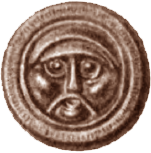During the 8th century, social and political structure was the driver behind the Western expansion of the Vikings from Scandinavia as many of their small districts had “kings” or “chieftains” who were looking for more control, and overpopulation was a big concern.

As many of the sagas (Erik the Red’s Saga, Greenlanders’ Saga, Egil’s Saga) describe, there were many accounts of the Western expansion into Iceland, Greenland, North America and other similar areas. Archaeological studies indicate that there were human settlements on the Faroe Islands around AD 600 to 650; however, the Saga of the Faroes only describes events around the year 1000 in that Christianity was being introduced at the time to the islands and a man named Grim Kamban had settled around AD 880.

Around AD 871, there was evidence that Norse settlers had been established in Iceland based on their remains of human settlements present above the volcanic layer that was left before they arrived. The other western settlement that is important to introduce would be the travels of Leif Eriksson in settling L’Anse aux Meadows around AD 1000, which these settlements were rare as the relations with the skraeling (native population of North America) became restless with the death of some of their people.

One set of material that is valuable in using primary sources to explain the Western expansion would be the Vinland Sagas, which were written down in two separate parts during the thirteenth century: the Greenlander’s Saga and Erik the Red’s Saga. They are literary products based on oral tradition that are memories of real characters and events that may or may not have occurred. The general story found within Erik the Red’s Saga and the Greenland’s Saga tells a similar timeline that a man, Bjarni Herjolfsson, encounters new lands south and west of Greenland and then Leif (nicknamed “the Lucky” and son of Erik the Red) begins to explore these lands while naming them. Another son of Erik the Red, Thorvald, leads an expedition to Vinland as does his brother, Thornstein, who dies leaving his wife, Gudrid. Karlsefani and Gudrid attempt to find the New World, which they never do as they die in Skagafjjord, Iceland, but they do have a son who is the first European born in America (Snorri). One of the places that is mentioned in both sagas is the exploration to Hop, which is identified by archaeology as New Brunswick. Again, these sagas were passed down as oral tradition, so some aspects of their stories may not be accurate regarding the Western expansion of the Vikings, but a majority of it seems to be accounted for by archaeological studies and other literary accounts.

With a significant amount more to say, the Western expansion of the Vikings was vast and not the stereotypical plunder that people often think about today. Beside the sagas and the other primary sources, it was useful to find books that treated the Viking age as a whole because there were more descriptions included about how this expansion fit into their larger expansion. In particular, Kirsten Seaver writes in The Last Vikings: the Epic Story of the Great Norse Voyagers about the Western expansion in great detail, including overall discussion about the individual components. As a starting point, her book is a great overview for looking at the Western expansion of the Vikings in great depth while bringing in sources about the overall expansion.

[C. P.]